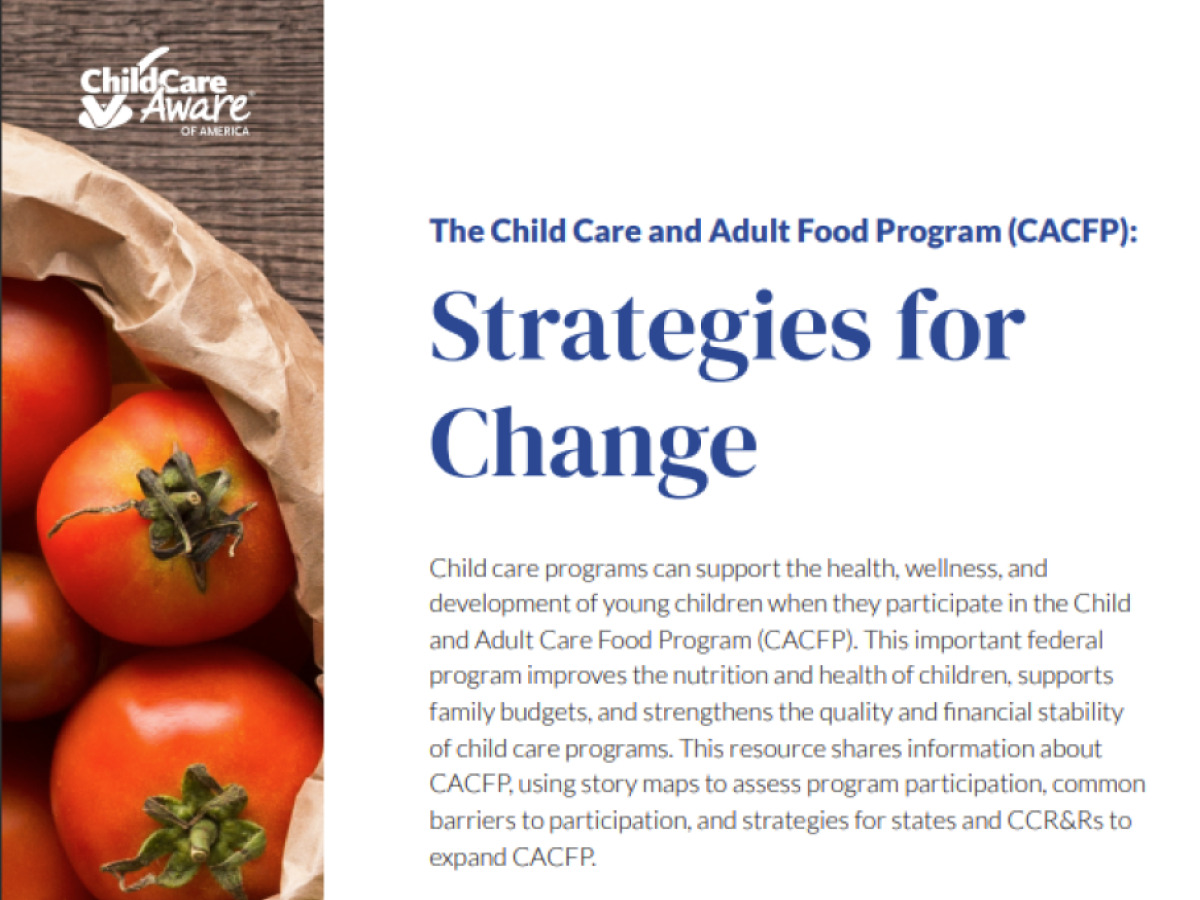CACFP Strategies for Change
June 19, 2024

Since 2019, Child Care Aware® of America (CCAoA) and Nemours Children’s Health have partnered to create geographic information system (GIS) technology story maps to visualize CACFP participation and highlight communities that could be considered for CACFP expansion. A story map combines both maps and text to help users interpret what they see. These maps layer information about child care provider location, participation in CACFP, food access and family poverty. You can explore the CACFP story maps created to assess CACFP participation in different states since the project began in 2019.
CACFP Story Maps
Each story map includes state-specific “Strategies for Change” that could have the greatest potential to expand participation and bolster CACFP. While these tactics vary state to state, they have typically focused around using the story maps to boost awareness of CACFP, strengthen systems of support for providers and sponsors, and shift state and federal policies and funding streams to fortify the program overall.
CCAoA houses story maps for:
- Florida
- Hawai’i
- Montana
- Nevada
- Pennsylvania
- Tennessee
- Illinois
- Michigan
- Texas
- Vermont
- Washington, D.C.
- Ohio
- Colorado
- Iowa
- Louisiana
- Maine
- Minnesota
- Alaska
- New Jersy
- Wisconsin
CACFP Strategies for Change
Boost CACFP Awareness
- Share the maps widely and with ECE stakeholders in your state to bring awareness of CACFP.
- Understand barriers by holding community listening sessions, conducting provider surveys or reaching out directly to non-participating providers.
- Build partnerships with CACFP sponsoring organizations, CCR&Rs, the state CACFP office and other groups that work directly with providers to get the word out about CACFP.
- Create resources about the CACFP to address common questions and translate them into all languages spoken in the community.
- Target outreach to Family Child Care providers through staffed FCC networks.
- Engage ambassadors who already participate to help spread the word about CACFP in their networks or communities. Compensate them with stipends, kitchen supplies, or access to free or discounted trainings.
Strengthen Systems of Support
- Develop support systems for child care providers that will include resources, best practices and details on how to fill out relevant paperwork and establish a mentorship program for interested programs to match with participating providers.
- Recruit and fund new sponsors, particularly in high-need areas.
- Enhance data systems. Maintain and fund regular, interoperable data sharing and analysis between child care and CACFP data holders and curators.
- Invest in coaching. Fund TA and nutrition coaching through CACFP sponsors, CCR&Rs, or other community partners.
Shift State and Federal Policies
- Increase state funds. Increase CACFP reimbursement rates with supplemental state funding.
- Champion progress. Share support for federal proposals that expand CACFP and leverage federal relief dollars to support the quality improvement of child nutrition.
- Elevate Farm-to-ECE and highlight why additional state funding is needed to support this program.
- Reduce burdens. Streamline requirements, reduce duplicative paperwork and support technology systems to improve program access for programs, sponsors, and families.
- Align standards and procedures. Consider how to review and align standards and monitoring procedures across licensing, child nutrition programs, and other programs to reduce the administrative burden of compliance for providers.
- Improve reimbursements. Increase rates, address payment delays and support timely reimbursements, reimburse additional meals, and allow all FCC to qualify for the highest rate.
For more information, read The Child and Adult Care Food Program (CACFP): Strategies for Change from Child Care Aware of America. Also explore Child Care Aware’s CACFP Story Maps.
